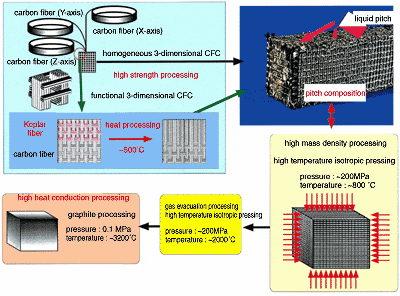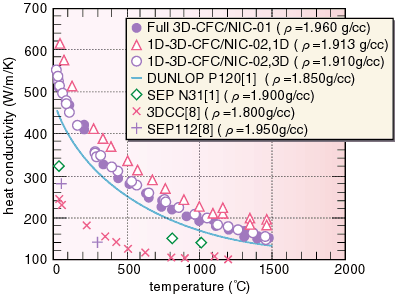| Carbon fiber composites are used for various purposes, due to
their excellent characteristics. Carbon is a light element, and
has the ability to withstand heat and stress. Thus, it is one
of the candidates for the divertor surface plates in a nuclear
fusion reactor. The divertor plates have to exhaust heat and particles
from the core plasma. A carbon fiber composite is usually fabricated
as follows: a felt-like fiber is soaked in carbon pitch and then
baked at high temperature. This process is repeated many times
to achieve the required mass density and homogeneity and etc.,
that are needed for high performance characteristics. Many bakings
are expensive in terms of electricity. A structure of the 3-dimensional
carbon fiber textile is first constructed. Carbon pitch is then
infiltrated by High temperature Isotropic Pressing (HIP). This
procedure is shown in Fig. 2-22. HIP was first developed for metal
joints. It is the first experience to use HIP for carbon fiber
composites. It is demonstrated that HIP at 2,000 degrees, 200
MPa is very effective to get a required mass density and heat
conductivity. The relationship between material temperature and
heat conductivity is shown for various trial test pieces. Material
design technologies make remarkable improvements by the application
of technology developed in the other fields. |

